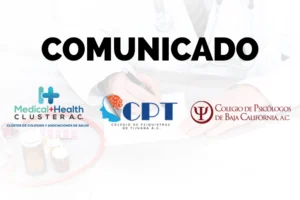En atención a la creciente preocupación sobre la confianza en...
Leer más
Family Herd Immunity: Study Shows Dramatic Protection

his transcript has been edited for clarity.
Welcome to Impact Factor, your weekly dose of commentary on a new medical study. I’m Dr F. Perry Wilson of the Yale School of Medicine.
We’ve talked a lot about the concept of herd immunity during this pandemic, but mostly in the context of huge populations — herd immunity at the country or even the world level. And, of course, when you zoom out to the entire world, achieving herd immunity (which will require about 80% of people to be immune to SARS-CoV-2) seems a long, long way off.
But the truth is more complicated than that. In reality, herd immunity is really a local phenomenon. If the level of immunity in your local social group is very high, transmission rates within that group are very low. It’s not perfect, of course — we live in an interconnected world, but embracing the idea of local herd immunity may help us more appropriately figure out where life can return to normal most quickly.
We can’t zoom in on the herd immunity question more than looking at a single household — think of it as “family herd immunity” — which is the topic of a paper appearing in JAMA Internal Medicine.
This study comes out of Sweden and leverages the fact that their national health system has data on basically everyone who lives in that country, leading to a cohort of just under 1.8 million people. The study design is fairly clever.

First, they identified people who were immunized against SARS-CoV-2 before April 1, 2021. Note I said “immunized” and not “vaccinated” — they are including those with prior infection in this group, as is appropriate when we are considering herd immunity. Then they built in a 2-week waiting period, to wash out the brewing infections that hadn’t been caught by April 1. Starting April 15, they tracked the new infections asking a straightforward question: Would having an immunized person in the household protect nonimmunized people in the household from infection?
The results were fairly dramatic. For example, among families that have two people living together, having one of them be immunized reduced the rate of infection in the other person by 45%.

Larger families allow us to look for a dose-response effect. Among five-member families, for each additional member that was immunized, the rate of infection in the nonimmunized members drops dramatically.

In fact, if four out of five family members were immunized, the rate of infection in that fifth member was 97% lower than in families of that size with no immunized members. Family herd immunity might be very real.
Now, there is a fairly glaring limitation in this analysis— one that I was shocked to see was not addressed in the paper, which otherwise was very nicely analyzed. How do we know the nonimmunized family member is really nonimmunized? The authors define immunization on the basis of vaccination or a positive PCR test for COVID, but I have to imagine that some family members may have been infected but not tested, either because they were asymptomatic or because it was obvious that they had COVID. That prior infection could certainly protect them from future infection, so maybe what we’re seeing here is just misclassification of susceptibles.
That said, the authors did a sensitivity analysis wherein they examined immunization via vaccination alone and found similar results, which is reassuring.
In short, what we have here is evidence that we can protect our nonimmunized family members (whether they choose to not be vaccinated or are unable to be vaccinated) by protecting ourselves. And insofar as the family is a microcosm of society, hopefully we can protect each other in a similar way.
F. Perry Wilson, MD, MSCE, is an associate professor of medicine and director of Yale’s Clinical and Translational Research Accelerator. His science communication work can be found in the Huffington Post, on NPR, and here on Medscape. He tweets @fperrywilson and hosts a repository of his communication work at www.methodsman.com.
https://www.medscape.com/viewarticle/960617?src=soc_fb_211012_mscpedt_news_mdscp_herdimmunity&faf=1
Créditos: Comité científico Covid




